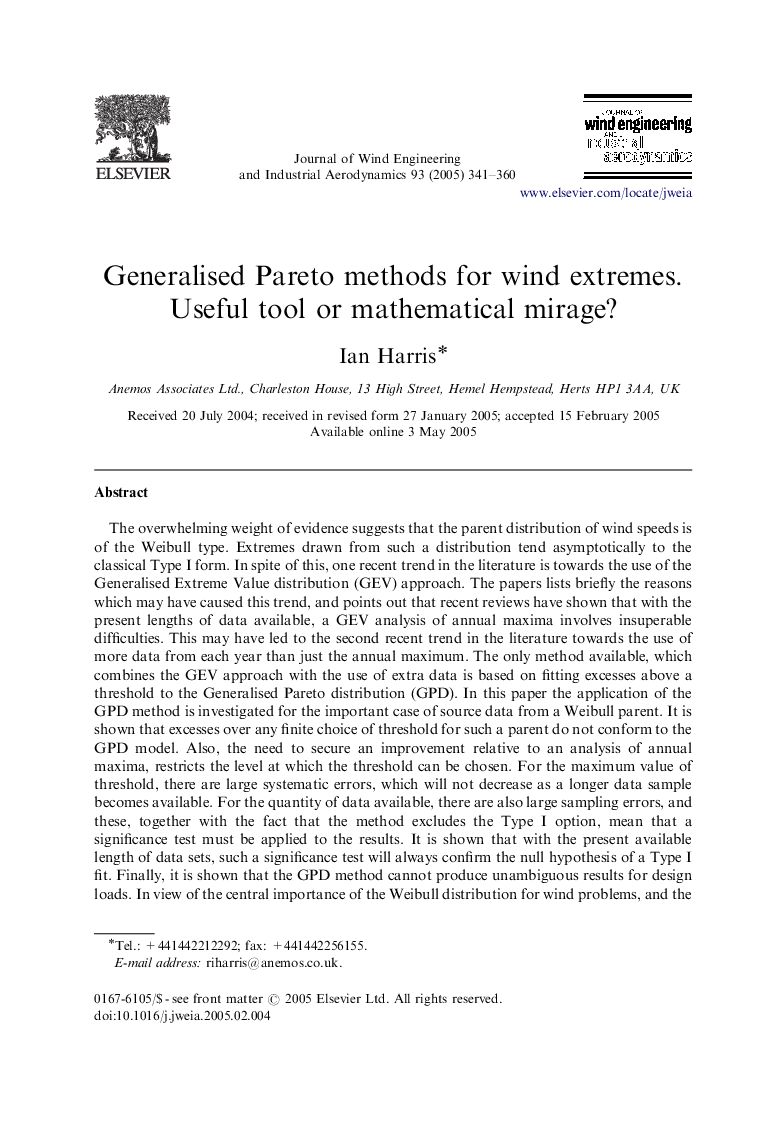| Article ID | Journal | Published Year | Pages | File Type |
|---|---|---|---|---|
| 10292278 | Journal of Wind Engineering and Industrial Aerodynamics | 2005 | 20 Pages |
Abstract
The overwhelming weight of evidence suggests that the parent distribution of wind speeds is of the Weibull type. Extremes drawn from such a distribution tend asymptotically to the classical Type I form. In spite of this, one recent trend in the literature is towards the use of the Generalised Extreme Value distribution (GEV) approach. The papers lists briefly the reasons which may have caused this trend, and points out that recent reviews have shown that with the present lengths of data available, a GEV analysis of annual maxima involves insuperable difficulties. This may have led to the second recent trend in the literature towards the use of more data from each year than just the annual maximum. The only method available, which combines the GEV approach with the use of extra data is based on fitting excesses above a threshold to the Generalised Pareto distribution (GPD). In this paper the application of the GPD method is investigated for the important case of source data from a Weibull parent. It is shown that excesses over any finite choice of threshold for such a parent do not conform to the GPD model. Also, the need to secure an improvement relative to an analysis of annual maxima, restricts the level at which the threshold can be chosen. For the maximum value of threshold, there are large systematic errors, which will not decrease as a longer data sample becomes available. For the quantity of data available, there are also large sampling errors, and these, together with the fact that the method excludes the Type I option, mean that a significance test must be applied to the results. It is shown that with the present available length of data sets, such a significance test will always confirm the null hypothesis of a Type I fit. Finally, it is shown that the GPD method cannot produce unambiguous results for design loads. In view of the central importance of the Weibull distribution for wind problems, and the poor performance of the GPD method, it is concluded that it should not be used to derive design loads.
Related Topics
Physical Sciences and Engineering
Energy
Renewable Energy, Sustainability and the Environment
Authors
Ian Harris,
